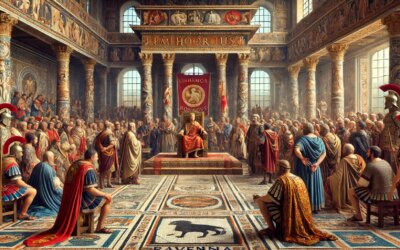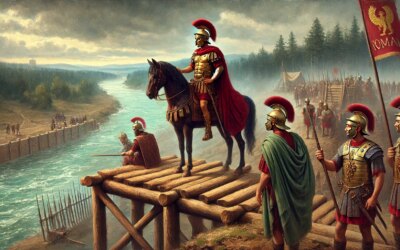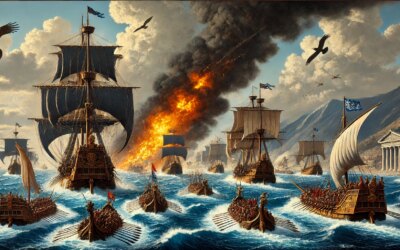Introduction: A General’s Vision for Renewal
In the twilight years of the Western Roman Empire, amid political decay and external threats, one emperor dared to dream of revival. In 460 AD, Majorian—soldier, reformer, and statesman—began constructing a fleet in the harbors of Ravenna, determined to restore Roman naval dominance and launch a decisive strike against the Vandals. It was a moment of fleeting hope and exceptional ambition, forged in the dying embers of imperial grandeur.
Majorian: Warrior of the West
Born into a noble military family, Flavius Julius Valerius Majorianus rose through the ranks under the powerful general Aetius. After Aetius’ assassination and the chaos that followed, Majorian was proclaimed emperor by the army in 457 AD. Though ruling a fractured and diminished Western Empire, he sought to reform its administration, invigorate its army, and revive its lost prestige.
The Vandal Threat and the Need for a Navy
Since their conquest of Carthage in 439 AD, the Vandals had dominated the western Mediterranean. Their navy raided coastal cities with impunity, sacked Rome in 455, and threatened the grain supply from Africa. Majorian knew that Rome could not reclaim its former strength without regaining control of the sea. To do so, he needed ships—and many of them.
Ravenna: Rome’s Maritime Arsenal
Ravenna, once a flourishing imperial capital with direct access to the Adriatic, became the epicenter of Majorian’s naval renewal. Roman shipwrights, laborers, and military engineers swarmed its harbors. New docks were built, materials requisitioned, and warships constructed in record time. The project echoed the grand naval mobilizations of the Punic Wars and signaled a return to Roman strategic thinking at sea.
Preparation for the African Campaign
Majorian’s goal was to invade North Africa and break the Vandal hold on Roman provinces. To secure the operation, he negotiated with the Visigoths and other local rulers, trying to forge alliances and prevent sabotage. His plan was ambitious but feasible—a rare spark of military initiative in a declining Western Empire.
Betrayal and Disaster
Just as the fleet neared completion, disaster struck. A faction within the imperial court—possibly under the influence of Ricimer, the powerful general and kingmaker—undermined the campaign. Vandals, perhaps tipped off, launched a surprise raid that destroyed much of the Roman fleet in port. Majorian’s invasion was canceled before it began, and the dream of African reconquest sank beneath the waves.
The Fall of Majorian
Following the failure, Majorian’s political support eroded. In 461 AD, while traveling through southern Gaul, he was arrested by Ricimer, stripped of his title, and executed. His reign had lasted just four years. Yet his reforms, ambitions, and the shipyards of Ravenna left a lasting impression: a vision of what might have been had the empire found unity and resolve.
Legacy of a Lost Fleet
Majorian’s naval endeavor was the last serious attempt by the Western Roman Empire to challenge its enemies on the seas. After his death, the West slid further into disarray. Ravenna remained an imperial seat under later rulers and eventually the Ostrogoths, but it never again served as the launch point for grand campaigns. The ships that never sailed became a metaphor for Rome’s lost potential.
Conclusion: The Last Builder of Empire
In the muddy harbors of Ravenna, Majorian tried to craft not just a fleet, but a future. He represented the final generation of Roman leaders who believed in the possibility of renewal through strength, vision, and reform. Though betrayed by politics and undone by treachery, his efforts remain a powerful symbol of resistance against decline—a last stand for a world soon to vanish beneath the waves of history.






